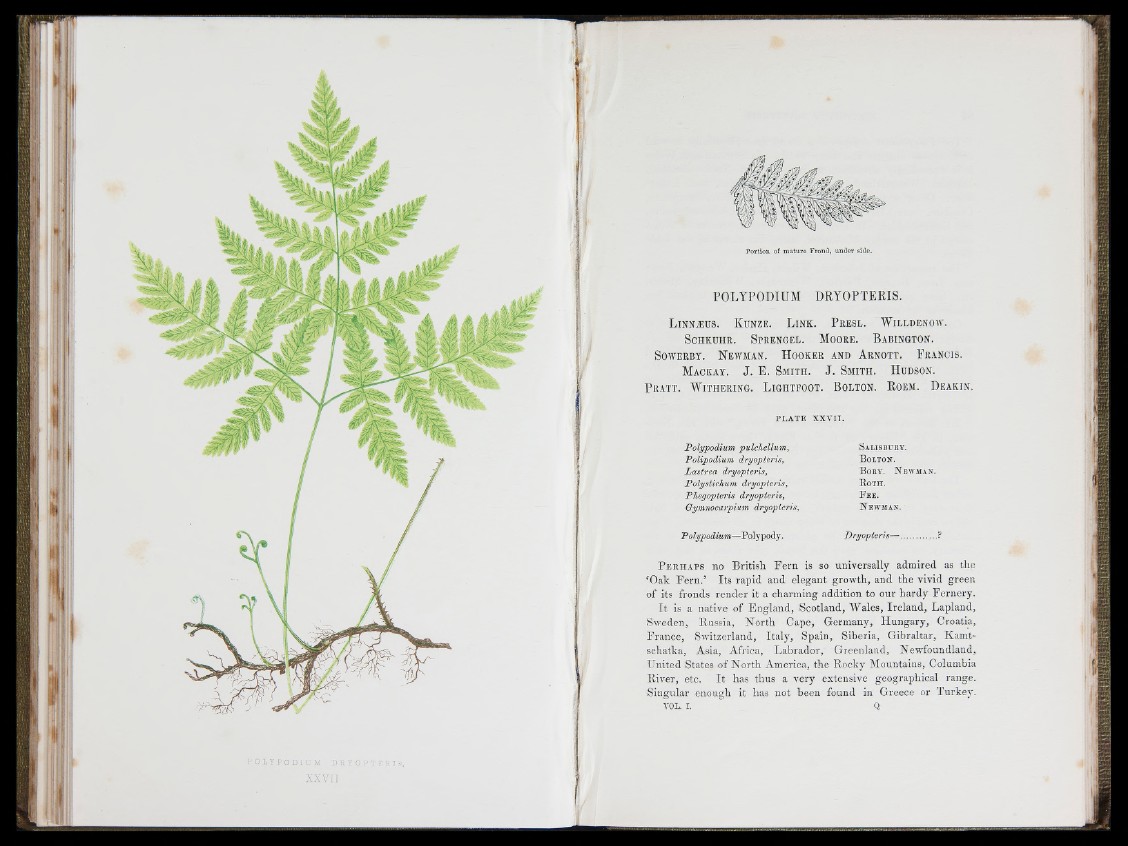
! I,
li
O L Ï F o D 11 :.! :i I; y 0
XXVI I
Portion of mature Frond, under side.
POLYPODIUM DRYOPTERIS.
L innæüs. K ünze. L in k . P resl. W il ldenow.
Schkühr. Sprengel. Moore. B abington.
SowERBY. N ewman. H ooker and A rnott. F rancis.
M ackay. j . E. Sm ith . J. Sm ith . H udson.
P ratt. W ith er in g . L ightfoot. B olton. R oem. D eakin.
p l a t e x x v i i .
Polypodium pulcliellum,
Polipodium dryopteris,
Lastrea dryopteris,
Polystichum dryopteris,
Phegopteris dryopteris,
Gymnocarpium dryopteris,
»KOT—Polypody.
S a l is b u e y .
B o l t o n .
B o e y . N e w m a n ,
B o t h .
F e e .
N e w m a n .
Dryopteris—................. ?
P e r h a p s no British F e rn is so universally admired as the
‘Oak F e rn .’ Its rap id and elegant growth, and the vivid green
of its fronds render it a charming addition to our ha rd y Fern e ry .
I t is a native of E n g lan d , Scotland, Wales, Ire la n d , Lapland,
Sweden, Russia, N o rth Cape, Germany, H u n g a ry , Croatia,
F rance, Switzerland, Ita ly , Spain, Siberia, G ibraltar, Kamt-
schatka, Asia, Africa, L ab rad o r, Greenland, Newfoundland,
Ih iite d States of N o rth America, the Rocky Mountains, Columbia
River, etc. I t has thus a very extensive geographical range.
Singular enough it has not been found in Greece or Turkey.
VOL. I. Q